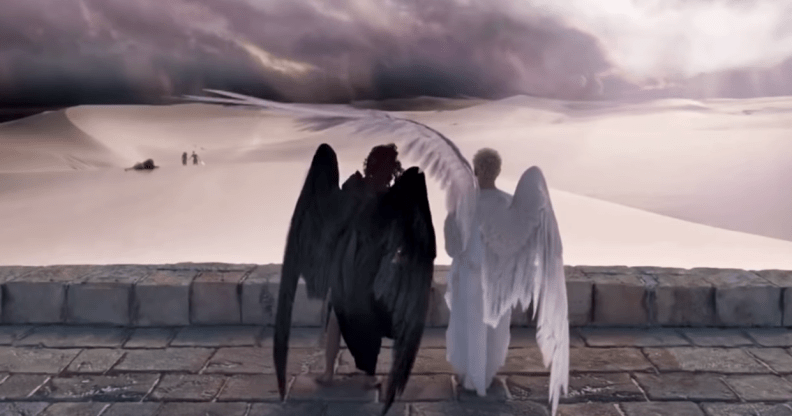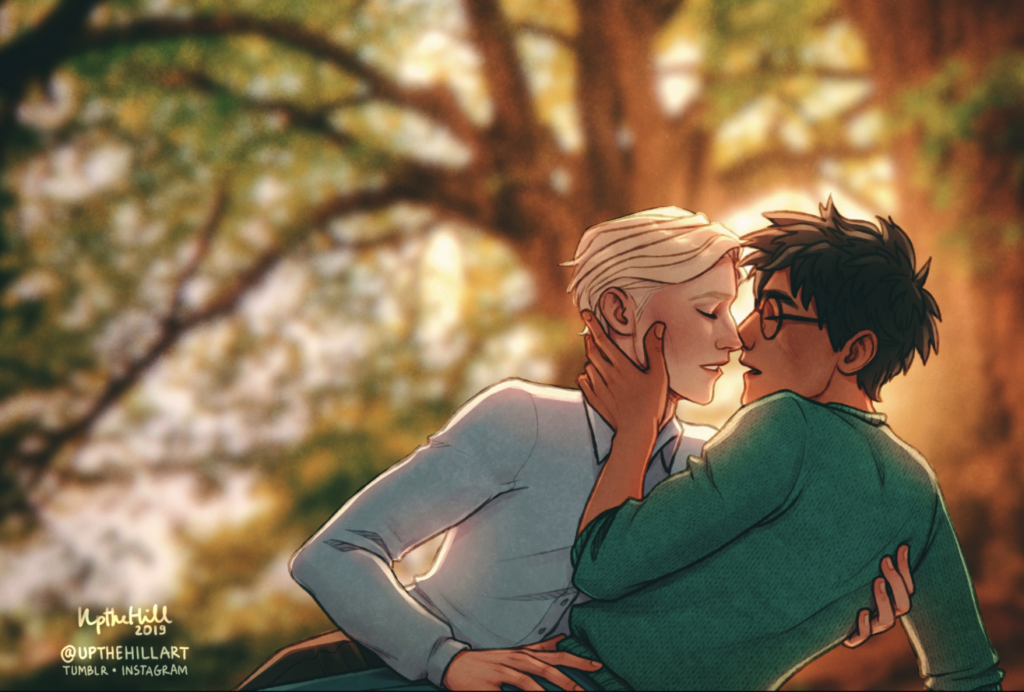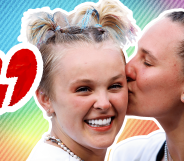LGBT couples make up more than 70% of Tumblr’s top 100 ships of 2019 but TV execs still won’t give the fans what they want

‘Ineffable husbands’ Aziraphale and Crowley from Good Omens are Tumblr’s top ship of 2019 (Amazon Prime/YouTube)
'Ineffable husbands' Aziraphale and Crowley from Good Omens are Tumblr's top ship of 2019 (Amazon Prime/YouTube)
Over 70 percent of Tumblr’s top 100 ships of 2019 are LGBT+, leaving fans wondering just why TV executives are still so reluctant to show same-sex romances on screen.
For those who aren’t in the know, ‘shipping’ refers to imagined romantic pairings between characters in TV shows, movies, books, or any other fandom. It’s common on the microblogging social media platform, which is mainly used by the 18-to-29 demographic.
The vibrant tangle of memes and mini-communities is analysed in the site’s yearly review, which collates all the ‘fandometrics’ to paint a picture of what’s got Tumblr talking.
It will come as no surprise to anyone familiar with Tumblr that the answer is queer shipping. Lots and lots of queer shipping.
Based on the number of tags that were posted, reblogged, liked and searched for, this definitive list of the top 100 ships of 2019 shows that the vast majority of Tumblr’s favourite couples – 73 per cent – were LGBT+.
The most popular was “Ineffable husbands” Aziraphale and Crowley of Amazon Prime’s Good Omens. Although the adorable angel and demon pair aren’t presented as gay on the show, subtle hints of the characters’ sexuality were enough to get Tumblr’s collective imagination spinning.
Before long, countless fan fictions, memes, cosplays and artworks portraying their 6,000 year romance were appearing all over the internet.
My partner and I cosplaying ineffable husbands <3. #GoodOmens #goodomenscosplay #AWA2019 #Crowley #Aziraphale #cosplay #ineffablehusbands pic.twitter.com/c0i5frC28h
— ToxicHowl (@Toxic_Howl) November 3, 2019
At number two is Keith and Lance, two space pilots from Dreamworks web series Voltron: Legendary Defender. Again, the characters aren’t presented as gay on the show but that hasn’t stopped Tumblr users shipping them as hard as they can.
This trend is repeated throughout the top 100 list, with fans desperately creating same-sex relationships in franchises where LGBT+ characters and romances are poorly represented.
Draco Malfoy and Harry Potter emerged as a particular favourite in the Harry Potter universe, along with Remus Lupin and Sirius Black.
One Direction‘s Harry Styles and Louis Tomlinson predictably made an appearance, and pop fans also partnered Jeon Jungkook from South Korean boyband BTS with his fellow bandmates Kim Taehyung and Park Jimin.

‘Drarry’ fan art (Tumblr/Upthehillart)
Marvel missing the mark with LGBT+ representation
The Marvel universe sparked a plethora of pairings, including Thor and Loki, Tony Stark and Steven Strange, Venom and Eddie Brock, Steve Rogers and Bucky Barnes, and Spiderman and Deadpool – who are charmingly named ‘Spideypool’.
Marvel has repeatedly come under fire for falling short of LGBT+ representation. In 2017 producers boasted that Thor: Ragnarok would feature the Marvel universe’s first bisexual superhero played by bisexual actress Tessa Thompson, but it was later revealed the one scene in which she mentions her sexuality was cut from the film.
And earlier this year fans expressed their outrage when a long-promised gay character in Avengers: Endgame turned out to be nothing more than a quick, throwaway moment on screen.
Marvel president Kevin Feige said in March that the idea of a LGBT superhero was “percolating,” and promised that there would be much more prominent LGBT+ characters in future. Obviously it can’t come soon enough for Tumblr.
While some of Marvel’s TV shows are taking steps in the right direction (there are two openly lesbian and trans characters in Jessica Jones), the big screen productions have been slow to follow.
?️? @glaad released its annual “Where We Are on TV” report, forecasting the presence of LGBTQ characters in original scripted series between June 2019 and May 2020.
The study found that only 10% of regular characters in scripted primetime broadcast series were LGBTQ pic.twitter.com/b4V8BYBpco— QuickTake by Bloomberg (@QuickTake) November 7, 2019
Marvel’s not the only culprit – GLAAD’s annual “Where We Are on TV” report found that in 2019, only 10 percent of regular characters in scripted primetime broadcast series were LGBT+.
Although the number of LGBT+ characters on screen is higher than it’s ever been before, this figure is still disproportionate to the actual amount of LGBT+ people in society, which by some reports numbers as much as 12 percent of the general population. The number is thought to be around twice as high in those aged 18 to 34.
Speaking to the New York Times, Flourish Klink, a host of the Fansplaining podcast and an expert on fan communities, explained that the phenomenon of ‘shipping’ is often explicitly political, and should be understood that way.
“People really want to see themselves reflected in media, and that has become wrapped up in shipping culture,” she said. Time for TV bosses to take note.

